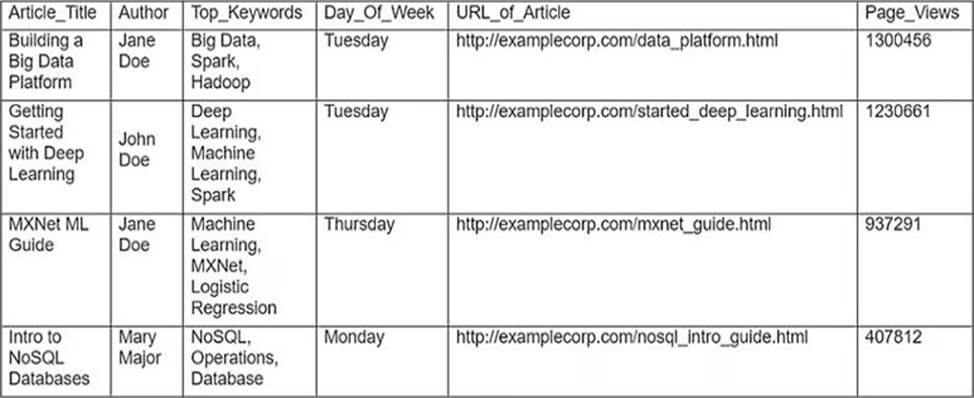A Machine Learning Specialist is working with a media company to perform classification on popular articles from the company’s website. The company is using random forests to classify how popular an article will be before it is published A sample of the data being used is below.
A Machine Learning Specialist is working with a media company to perform classification on popular articles from the company’s website. The company is using random forests to classify how popular an article will be before it is published A sample of the data being used is below.
Given the dataset, the Specialist wants to convert the Day-Of_Week column to binary values.
What technique should be used to convert this column to binary values.

A . Binarization
B . One-hot encoding
C . Tokenization
D . Normalization transformation
Answer: B
Explanation:
One-hot encoding is a technique that can be used to convert a categorical variable, such as the Day-Of_Week column, to binary values. One-hot encoding creates a new binary column for each unique value in the original column, and assigns a value of 1 to the column that corresponds to the value in the original column, and 0 to the rest. For example, if the original column has values Monday, Tuesday, Wednesday, Thursday, Friday, Saturday, and Sunday, one-hot encoding will create seven new columns, each representing one day of the week. If the value in the original column is Tuesday, then the column for Tuesday will have a value of 1, and the other columns will have a value of 0.
One-hot encoding can help improve the performance of machine learning models, as it eliminates the ordinal relationship between the values and creates a more informative and sparse representation of the data.
Reference: One-Hot Encoding – Amazon SageMaker One-Hot Encoding: A Simple Guide for Beginners | by Jana Schmidt … One-Hot Encoding in Machine Learning | by Nishant Malik | Towards …
Latest MLS-C01 Dumps Valid Version with 104 Q&As
Latest And Valid Q&A | Instant Download | Once Fail, Full Refund

